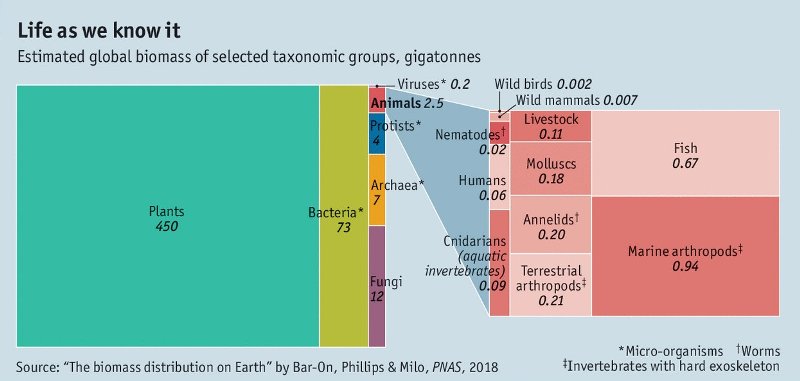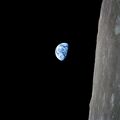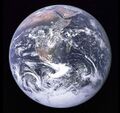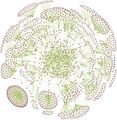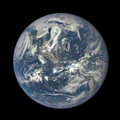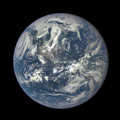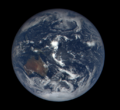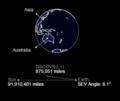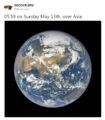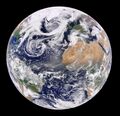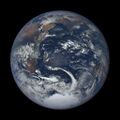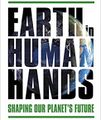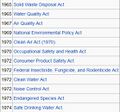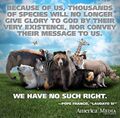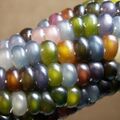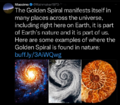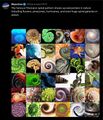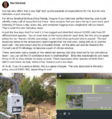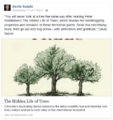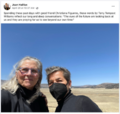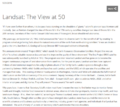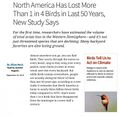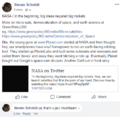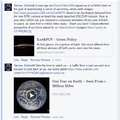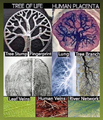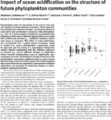Category:Biosphere: Difference between revisions
Siterunner (talk | contribs) No edit summary |
Siterunner (talk | contribs) No edit summary |
||
| (10 intermediate revisions by the same user not shown) | |||
| Line 1: | Line 1: | ||
<addthis /> | <addthis /> | ||
[[File:Featured.png]] | |||
[[File: | [[File:Biosphere, life as we know it by biomass.jpg]] | ||
'' | ''Biosphere: The global sum of all ecosystems. It can be termed the zone of life on Earth, a closed system (apart from solar and cosmic radiation and heat from the interior of the Earth), and largely self-regulating. By the most general biophysiological definition, the biosphere is the global ecological system integrating all living beings and their relationships, including their interaction with the elements of the lithosphere, geosphere, hydrosphere, and atmosphere.'' | ||
• http://en.wikipedia.org/wiki/Biosphere | |||
······················································· | |||
<big>'''''The composition of the biosphere'''''</big> | |||
:• https://www.pnas.org/content/115/25/6506 (2018) | |||
:• https://www.pnas.org/content/115/25/6506/tab-figures-data | |||
:• https://www.pnas.org/content/115/25/6328 | |||
:• https://www.sciencemag.org/news/2018/05/plants-outweigh-all-other-life-earth | |||
:• https://apnews.com/72a5dd80a5004804ba1c458b6a438ec3 | |||
:• https://twitter.com/czzpr/status/1022045948715917313 | |||
'''''Plants rule the carbon weight of the world''''' | |||
''There are almost 8 billion people alive today. How do we weigh up in comparison to other living things?'' | |||
''The carbon weight of all life on Earth is estimated at 550 gigatonnes, according to a 2018 study by the Proceedings of the National Academy of Sciences. Human beings make up only around 0.01 per cent of this biomass.'' | |||
:• https://www.abc.net.au/news/2018-10-05/chart-of-the-day-plants-rule-carbon-weight-of-life-on-earth/10069684 | |||
····································· | |||
'''''Biosphere Data via NASA''''' | |||
: Ocean Data | |||
• https://svs.gsfc.nasa.gov/30289 | |||
• https://svs.gsfc.nasa.gov/3938 | |||
• https://svs.gsfc.nasa.gov/cgi-bin/search.cgi?value=seawifs&expanded=filters | |||
• https://svs.gsfc.nasa.gov/30801 | |||
: Global Biosphere, Yearly Cycle | |||
• https://svs.gsfc.nasa.gov/vis/a030000/a030500/a030595/biosphere_cryo_720p.mp4 | |||
• https://svs.gsfc.nasa.gov/30595 | |||
• https://svs.gsfc.nasa.gov/11861 | |||
''SeaWIFS full mission composite -- Ocean chlorophyll concentration averaged over the full mission – 4 Sep 1997 to 30 Nov 2010'' | ''SeaWIFS full mission composite -- Ocean chlorophyll concentration averaged over the full mission – 4 Sep 1997 to 30 Nov 2010'' | ||
https://svs.gsfc.nasa.gov/vis/a030000/a030800/a030801/S19972472010334.L3m_CU_CHL_chlor_a_9km_reproj_v1_labeled_print.jpg | https://svs.gsfc.nasa.gov/vis/a030000/a030800/a030801/S19972472010334.L3m_CU_CHL_chlor_a_9km_reproj_v1_labeled_print.jpg | ||
| Line 25: | Line 77: | ||
''The SeaWiFS instrument aboard the SeaStar satellite has been collecting ocean data since 1997. By monitoring the color of reflected light via satellite, scientists can determine how successfully plant life is photosynthesizing. A measurement of photosynthesis is essentially a measurement of successful growth, and growth means successful use of ambient carbon. This animation represents nearly a decade's worth of data taken by the SeaWiFS instrument, showing the abundance of life in the sea and along the Western seaboard of the United States. Dark blue represents warmer areas where there is little life due to lack of nutrients, and greens and reds represent cooler nutrient-rich areas. The nutrient-rich areas include coastal regions where cold water rises from the sea floor bringing nutrients along and areas at the mouths of rivers where the rivers have brought nutrients into the ocean from the land. The nutrient-rich waters contribute to some of the oxygen-poor pockets of the seas called dead zones.'' | ''The SeaWiFS instrument aboard the SeaStar satellite has been collecting ocean data since 1997. By monitoring the color of reflected light via satellite, scientists can determine how successfully plant life is photosynthesizing. A measurement of photosynthesis is essentially a measurement of successful growth, and growth means successful use of ambient carbon. This animation represents nearly a decade's worth of data taken by the SeaWiFS instrument, showing the abundance of life in the sea and along the Western seaboard of the United States. Dark blue represents warmer areas where there is little life due to lack of nutrients, and greens and reds represent cooler nutrient-rich areas. The nutrient-rich areas include coastal regions where cold water rises from the sea floor bringing nutrients along and areas at the mouths of rivers where the rivers have brought nutrients into the ocean from the land. The nutrient-rich waters contribute to some of the oxygen-poor pockets of the seas called dead zones.'' | ||
○ | |||
<big>'''Under the Earth's Surface'''</big> | |||
Life on Earth's lands and oceans and as science is beginning to discover, there is the "dark biosphere"... | |||
• https://www.sciencealert.com/scientists-lift-lid-on-massive-biosphere-of-life-hidden-under-earth-s-surface/amp | |||
○ | |||
• https://www.greenpolicy360.net/w/Category:Biodiversity | |||
○ | |||
| Line 32: | Line 103: | ||
[[Category:Earth Science]] | [[Category:Earth Science]] | ||
[[Category:Ecology Studies]] | [[Category:Ecology Studies]] | ||
[[Category: | [[Category:Origins of Life]] | ||
[[Category:Sustainability]] | [[Category:Sustainability]] | ||
[[Category:Externalities]] | [[Category:Externalities]] | ||
[[Category:Extinction]] | |||
[[Category:Geology]] | |||
[[Category:Geophysics and Geochemistry]] | |||
[[Category:Land Ethic]] | [[Category:Land Ethic]] | ||
[[Category:Planet Citizen]] | [[Category:Planet Citizen]] | ||
[[Category:Planet Scientist]] | [[Category:Planet Scientist]] | ||
[[Category:Soil]] | [[Category:Soil]] | ||
[[Category:Sustainability Policies]] | [[Category:Sustainability Policies]] | ||
Revision as of 21:27, 22 April 2019
<addthis />
Biosphere: The global sum of all ecosystems. It can be termed the zone of life on Earth, a closed system (apart from solar and cosmic radiation and heat from the interior of the Earth), and largely self-regulating. By the most general biophysiological definition, the biosphere is the global ecological system integrating all living beings and their relationships, including their interaction with the elements of the lithosphere, geosphere, hydrosphere, and atmosphere.
• http://en.wikipedia.org/wiki/Biosphere
·······················································
The composition of the biosphere
Plants rule the carbon weight of the world
There are almost 8 billion people alive today. How do we weigh up in comparison to other living things?
The carbon weight of all life on Earth is estimated at 550 gigatonnes, according to a 2018 study by the Proceedings of the National Academy of Sciences. Human beings make up only around 0.01 per cent of this biomass.
·····································
Biosphere Data via NASA
- Ocean Data
• https://svs.gsfc.nasa.gov/30289
• https://svs.gsfc.nasa.gov/3938
• https://svs.gsfc.nasa.gov/cgi-bin/search.cgi?value=seawifs&expanded=filters
• https://svs.gsfc.nasa.gov/30801
- Global Biosphere, Yearly Cycle
• https://svs.gsfc.nasa.gov/vis/a030000/a030500/a030595/biosphere_cryo_720p.mp4
• https://svs.gsfc.nasa.gov/30595
• https://svs.gsfc.nasa.gov/11861
SeaWIFS full mission composite -- Ocean chlorophyll concentration averaged over the full mission – 4 Sep 1997 to 30 Nov 2010
The SeaWiFS instrument aboard the SeaStar satellite has been collecting ocean data since 1997. By monitoring the color of reflected light via satellite, scientists can determine how successfully plant life is photosynthesizing. A measurement of photosynthesis is essentially a measurement of successful growth, and growth means successful use of ambient carbon. This animation represents nearly a decade's worth of data taken by the SeaWiFS instrument, showing the abundance of life in the sea and along the Western seaboard of the United States. Dark blue represents warmer areas where there is little life due to lack of nutrients, and greens and reds represent cooler nutrient-rich areas. The nutrient-rich areas include coastal regions where cold water rises from the sea floor bringing nutrients along and areas at the mouths of rivers where the rivers have brought nutrients into the ocean from the land. The nutrient-rich waters contribute to some of the oxygen-poor pockets of the seas called dead zones.
○
Under the Earth's Surface
Life on Earth's lands and oceans and as science is beginning to discover, there is the "dark biosphere"...
○
• https://www.greenpolicy360.net/w/Category:Biodiversity
○
Subcategories
This category has the following 12 subcategories, out of 12 total.
B
C
E
F
G
N
S
W
Pages in category "Biosphere"
The following 68 pages are in this category, out of 68 total.
3
C
D
E
F
G
- Generation Green
- Genesis, Stewardship and Beyond
- Global Risks Report
- Green Bank in Maryland - and More
- Green Stories of the Day
- Green Stories of the Day - GreenPolicy360 Archive
- GreenPolicy360 Archive Highlights 2013
- GreenPolicy360 Archive Highlights 2014
- GreenPolicy360 Archive Highlights 2015
- GreenPolicy360 Archive Highlights 2016
- GreenPolicy360 Archive Highlights 2017
- GreenPolicy360 Archive Highlights 2018
- GreenPolicy360 Archive Highlights 2019
- GreenPolicy360 Archive Highlights 2020
- GreenPolicy360 Archive Highlights 2023
O
P
Media in category "Biosphere"
The following 200 files are in this category, out of 288 total.
(previous page) (next page)- 3M lawsuit re forever chemicals - June 2023.png 603 × 600; 357 KB
- A Fierce Green Fire.jpg 208 × 314; 13 KB
- A Planet Citizen View.png 799 × 1,241; 1.64 MB
- A root and its mycorrhizal fungus surroundings.PNG 315 × 382; 236 KB
- About Baselines and Change.png 592 × 312; 33 KB
- Above.png 500 × 375; 173 KB
- Acting on Climate Change.png 402 × 139; 109 KB
- All species day with homo sapien in Santa Fe .jpg 640 × 369; 98 KB
- Amazon-rainforest.jpg 814 × 459; 142 KB
- Anthropocene bks016.png 800 × 248; 227 KB
- Anthropocene-crutzen.jpg 628 × 347; 79 KB
- Anthropocene-the-geology-of-humanity.jpg 628 × 347; 79 KB
- Anthropocene.jpg 450 × 187; 18 KB
- Apollo.jpg 715 × 715; 102 KB
- Apple varietals.jpg 600 × 314; 30 KB
- April 28, 2016.png 586 × 415; 159 KB
- Arable land percent world.png 1,357 × 628; 40 KB
- ArcGIS-logo.png 302 × 167; 7 KB
- As Earth Warms, NASA Targets 'Other Half' of Carbon, Climate Equation.jpg 1,504 × 846; 242 KB
- AskNatureAvatar s.png 200 × 200; 14 KB
- Astro POV - Mike Massimino - PlanetCitizen.png 800 × 466; 792 KB
- Astro Samantha.png 448 × 266; 78 KB
- At st peters endangered species.png 717 × 431; 242 KB
- Audubon - Photo by Shari McCollough.jpg 795 × 559; 76 KB
- Avatar-eco-mythology.jpg 225 × 200; 14 KB
- Battle for Democracy.jpg 640 × 123; 24 KB
- Be a planet citizen, make a choice, act to reduce climate change.jpg 1,024 × 595; 60 KB
- Be Worried, Be Very Worried.jpg 400 × 533; 211 KB
- Bernie Sanders, Senate 2.PNG 800 × 517; 379 KB
- Bernie Sanders, Senate Aug 3.PNG 800 × 518; 388 KB
- Biden re Earth Day 2023.png 640 × 400; 155 KB
- Biden-Harris, CNN News Online - Nov 8, 2020.jpg 800 × 484; 114 KB
- Big Wobble 2020.jpg 507 × 342; 79 KB
- Biodiversity more than counting species.png 640 × 132; 55 KB
- Biodiversity-by-dreamchaotic.jpg 600 × 173; 66 KB
- Blog-soil.jpg 722 × 491; 58 KB
- Blue Marble photo - Apollo 17.jpg 642 × 605; 129 KB
- Blue Marble photo taken by the crew of Apollo 17 (1972).jpg 642 × 605; 129 KB
- Blue Marble updated-August 2015.jpg 1,024 × 341; 109 KB
- Blue-Green & Planet Citizens, Planet Scientists.png 549 × 844; 94 KB
- Brief History of Carbon Emissions as of 2016.png 770 × 425; 342 KB
- CAIT Map 1.png 800 × 415; 123 KB
- California's kelp forests and coastal biodiversity diminished.png 532 × 754; 307 KB
- Canary - 1.jpg 448 × 901; 144 KB
- Canary - 2.png 446 × 531; 264 KB
- Cardinal directions m.png 250 × 250; 20 KB
- Carl Sagan at the Emerging Issues Forum - 1990.png 360 × 460; 192 KB
- Carl Sagan at the Emerging Issues Forum.png 747 × 600; 600 KB
- Carl Sagan, 1985.PNG 480 × 566; 331 KB
- Carl Sagan, the atmosphere unifies and connects all of our world.png 360 × 390; 229 KB
- Christianity green via christian courier.jpg 768 × 512; 216 KB
- Citizen of the planet girl.jpg 400 × 265; 35 KB
- Citizens Climate Lobby - Save Our Future Act 2021.jpg 518 × 262; 77 KB
- Climate cases on the rise - Nature, Sept 2021.png 800 × 562; 181 KB
- Climate Change Laws - database collaboration.png 640 × 271; 76 KB
- Climate Change Laws of the World - database.PNG 768 × 845; 383 KB
- Climate Change Litigation Databases Climate Law.png 800 × 330; 73 KB
- Climate-Action-Plan-World Bank-2016.png 780 × 6,050; 3.2 MB
- Connect cooperative networking 2.jpg 415 × 425; 48 KB
- Connect with Nature.png 405 × 280; 17 KB
- Consumption & Extinction.png 331 × 207; 18 KB
- Copernicus EU logo.jpg 400 × 400; 41 KB
- Coral bleaching Great Barrier Reef 2016.jpeg 630 × 472; 91 KB
- Coral growing-Mott Lab,Florida.jpg 800 × 382; 114 KB
- Coral reef rejuvenation-montage.png 569 × 236; 318 KB
- Ddt-spray-kids-in-florida.jpg 640 × 360; 101 KB
- Deepeconomypb-mckibben.jpg 200 × 305; 16 KB
- Dicaprio-paris climate summit-photo credit-thierry chesnot.jpg 389 × 259; 38 KB
- Dirt, soil, worms, good.png 700 × 399; 695 KB
- Does Nature Have Rights.png 351 × 219; 168 KB
- Don Perry, Life Above the Jungle Floor.jpg 600 × 800; 191 KB
- Dreaming the Future by Kenny Ausubel-Bioneers.jpg 194 × 293; 8 KB
- DSCOVR looks back at earth from a million miles away m.jpg 1,004 × 469; 40 KB
- DSCOVR looks back at earth from a million miles away.jpg 1,446 × 670; 65 KB
- DSCOVR-EPIC 187 1003705 americas dxm.png 985 × 985; 1.21 MB
- DSCOVR-EPIC 187 1003705 m americas dxm.png 502 × 502; 330 KB
- DSCOVR-EPIC ImagingofPlanetEarth 2.png 686 × 628; 449 KB
- DSCOVR-EPIC ImagingofPlanetEarth.png 316 × 266; 19 KB
- DSCOVR-EPIC-May13,2018.png 760 × 872; 598 KB
- Each of us can make a difference.png 521 × 474; 191 KB
- Earth at the Tipping Point April 2006 Time.png 711 × 330; 251 KB
- Earth Breathing.jpg 800 × 450; 117 KB
- Earth Day - DSCOVR-EPIC 2019.jpg 800 × 772; 150 KB
- Earth day 2016.jpg 704 × 220; 35 KB
- Earth Day 2022 - Act up.png 457 × 370; 155 KB
- Earth Day memories.png 800 × 210; 381 KB
- Earth from DSCOVR.jpg 1,024 × 1,024; 156 KB
- Earth grassroots.jpg 374 × 238; 32 KB
- Earth in Human Hands Intro.png 622 × 423; 121 KB
- Earth in Human Hands.jpg 325 × 385; 34 KB
- Earth Right Now.png 583 × 365; 145 KB
- Earth topo observatory nasa 1024x512.jpg 1,024 × 512; 96 KB
- Earth-BlueMarble-climate.gov .jpg 680 × 400; 114 KB
- EarthRightNow Earth Science satellite fleet circa 2015.jpg 1,500 × 1,125; 0 bytes
- Earthrise - NASA - Astro Bill Anders.png 497 × 479; 216 KB
- Earthrise2015 m.png 703 × 449; 346 KB
- Earthrise2015.png 1,004 × 642; 558 KB
- Earths rotation as we roll thru space.jpg 800 × 529; 69 KB
- Ecoregions of the World terrestrial-wiki.jpg 800 × 400; 33 KB
- ECOTRAM - Don Perry.png 800 × 474; 390 KB
- Education experiments going up on SpaceX.png 879 × 573; 450 KB
- Env policy laws US 'the beginning' of env era.jpg 370 × 345; 65 KB
- Envir earth day 1970.jpg 197 × 295; 13 KB
- Environmental Security and a Thin Blue Layer around the Home Planet.png 800 × 308; 322 KB
- EO and Fire Ants in the US - on World Wildlife Day.png 768 × 811; 663 KB
- EPA History Xin Liu-2010.pdf ; 2.88 MB
- Epic 1b 20160615154340 01.jpg 2,048 × 2,048; 250 KB
- Epicday260.gif 985 × 554; 2.76 MB
- ESRI logo.jpg 366 × 138; 10 KB
- Eukaryotic Cell SCU.jpg 716 × 1,024; 799 KB
- Eunice Foote Illustration climate.gov.jpg 620 × 296; 55 KB
- Fact Checking organizations at work.jpg 800 × 390; 44 KB
- Facts Count-WaPo Reports-19127 false-misleading claims in 1226 days.jpg 601 × 489; 100 KB
- Fallows re Brown speech to the AGU Dec2016.png 533 × 354; 65 KB
- Feeling the Heat 1989.png 800 × 1,095; 400 KB
- Fire Ants.png 601 × 600; 603 KB
- For Wildlife.jpg 444 × 640; 224 KB
- Fox on Earth Day 2023.jpg 640 × 275; 58 KB
- From Laudato Si protecting diversity of life.jpg 800 × 784; 118 KB
- G7 Climate News.png 640 × 205; 125 KB
- G7 DJTclimatetweet.png 640 × 300; 45 KB
- G7 Split-2017.png 800 × 182; 177 KB
- G7-Climate-2017.png 800 × 136; 66 KB
- G7-Climate-News.png 640 × 317; 176 KB
- Gateway to Astronaut Photography of Earth.png 1,024 × 409; 731 KB
- Gavin Schmidt - NASA - January 2022.png 451 × 436; 150 KB
- Glass Gem Corn.jpg 400 × 400; 21 KB
- Global Apollo Programme .png 654 × 156; 29 KB
- Global Biodiversity Information-Data.png 501 × 266; 124 KB
- Global biosphere image NASA-Goddard.jpg 360 × 230; 36 KB
- Global CO2 Emissions 1900-2010.png 714 × 352; 15 KB
- Global Forest Watch top page 2014.png 800 × 416; 350 KB
- Golden Spiral from M.png 683 × 600; 487 KB
- Golden spiral, Fibonacci spiral, nature at work.jpg 755 × 883; 160 KB
- Google Earth Engine.png 448 × 165; 45 KB
- Green Networking @GreenPolicy360.net.png 788 × 604; 764 KB
- Haiku poems - Owl against a dusk sky - via Haiku Foundation.png 514 × 413; 144 KB
- Haikubox via RM citizen science.png 600 × 640; 466 KB
- Hand and Leaf w Life Lines.jpg 720 × 900; 41 KB
- Healthy-soil.jpg 930 × 325; 97 KB
- Hidden Life of Trees.png 500 × 531; 178 KB
- How Earth Survived - Time Magazine - Sept 2019.jpg 644 × 858; 193 KB
- Human history, as an 800 page book.jpg 799 × 1,112; 148 KB
- In Love with Earth.jpg 328 × 499; 15 KB
- In nature, nothing exists alone.jpg 500 × 357; 26 KB
- In the smallest creatures god.png 748 × 149; 232 KB
- INaturalist butterfly.jpg 1,024 × 683; 202 KB
- Internet Bill of Rights.png 469 × 38; 33 KB
- IPBES-assessment stages-a.jpg 800 × 451; 246 KB
- ISS025E006291viaDougWheelock.jpg 3,246 × 1,937; 715 KB
- Jerry Brown AGU-Dec14,2016.png 476 × 344; 117 KB
- Joan and Christiana - April 2022.png 486 × 460; 282 KB
- Joe Biden is projected winner Nov7-2020.jpg 343 × 120; 26 KB
- Jorge Leon Arellano OPEC-Energy Demand Presentation-CSIS-Dec2016.png 700 × 394; 351 KB
- Kelp NOAA credit Robert Schwemmer.jpg 450 × 299; 193 KB
- Kidscelebrateclimatelawsuit.jpg 480 × 319; 52 KB
- Landsat 50th anniv Sept 2016.jpg 800 × 456; 94 KB
- Landsat at 50.png 800 × 713; 345 KB
- Landsat-Google Maps Screen Shot 2016-06-17 Columbia Glacier.jpg 1,200 × 587; 312 KB
- Leap Manifesto.png 700 × 153; 306 KB
- Living Earth.png 441 × 183; 106 KB
- Loss of N American Birds - 1.jpg 800 × 788; 173 KB
- Lunar Orbiter 1 First Earth Moon Image - 1966.png 656 × 805; 383 KB
- Lunar Orbiter 1 image of Planet Earth.png 800 × 551; 269 KB
- Map of the World wiki commons GTN800x370.png 800 × 370; 39 KB
- Mapping the Earth with Google Earth Outreach.jpg 640 × 648; 109 KB
- March for Science-1.png 800 × 291; 596 KB
- Molas Pass, Colorado Photo courtesy of Reg Larkin Sept 2016.jpg 2,048 × 1,535; 583 KB
- Moral issue-biodiversity protection.jpg large.png 752 × 598; 606 KB
- Mushroom life in the forest.png 640 × 458; 626 KB
- NASA and micro nano sats.png 443 × 431; 43 KB
- NASA has a new mission... against Methane.png 800 × 576; 681 KB
- NASA MODIS One week in April 2016.jpg 800 × 480; 87 KB
- NASA test mission to protect earth from asteroid - Nov 2021.png 508 × 800; 424 KB
- NASA-DSCOVR and GreenPolicy360-July2016.png 577 × 575; 96 KB
- Natural Capital Biodiversity.png 670 × 139; 173 KB
- Nature Us.png 480 × 557; 626 KB
- Nearly Every Country Signs On to a Sweeping Deal to Protect Nature.png 600 × 756; 311 KB
- Nelson, the oil spill and the student anti-war movement.png 600 × 457; 529 KB
- New Species Discovered-2018.png 800 × 212; 508 KB
- NewSpace March 2015 top article first page Hubbard.png 650 × 910; 339 KB
- OCO-3 video.jpg 640 × 371; 76 KB
- OCO-3 video2.jpg 640 × 376; 45 KB
- On the road sjs.jpg 293 × 249; 0 bytes
- On-the-Road-11.jpg 800 × 326; 52 KB
- One year of Earth from DSCOVR.png 800 × 564; 212 KB
- Over Paris via StationCDR-ScottKelly Nov302015.png 885 × 473; 544 KB
- Overview planet earth1.jpg 640 × 272; 17 KB
- Pale Blue Dot - The Book by Carl Sagan 2.jpg 330 × 143; 17 KB
- Paris Climate Summit 195 Nations Challenged INDCs.png 512 × 127; 21 KB
- Peace-dove w olive-branch sm.jpg 336 × 417; 37 KB
- Planet cit s.jpg 384 × 212; 38 KB
- Planet Citizen @ParisSummit Dec1.png 570 × 87; 20 KB
- Biodiversity
- Earth Law
- Earth Science
- Ecology Studies
- Origins of Life
- Sustainability
- Externalities
- Extinction
- Geology
- Geophysics and Geochemistry
- Land Ethic
- Planet Citizen
- Planet Scientist
- Soil
- Sustainability Policies
- Atmospheric Science
- Biogeosciences
- Climate Change
- Cryosphere
- Mineralogy
- Geophysics
- Hydrology
- Natural Resources
- Ocean Science
- Planetary Science
- Space Science and Space Physics

